November 28th is the 80th anniversary of the Cocoanut Grove Fire at 17 Piedmont Street, Boston. Four hundred and ninety people were killed and many more were seriously injured. It is known as the worst nightclub fire in the history of the United States and the second deadliest building fire.
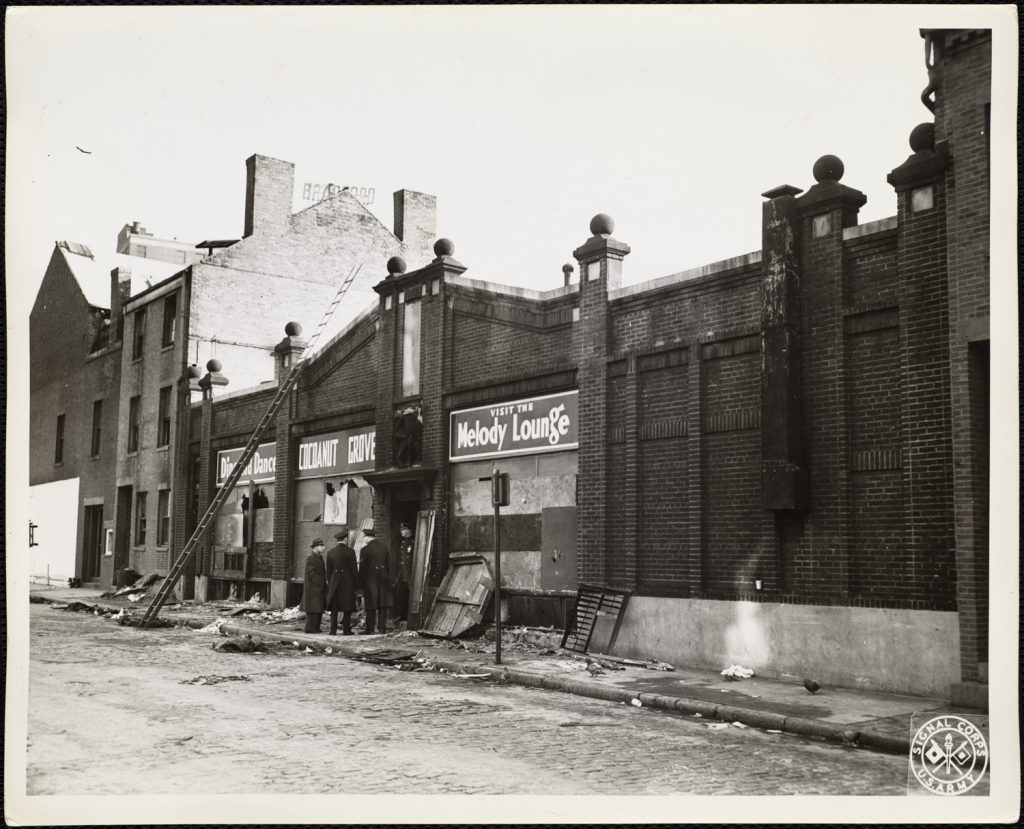
https://www.flickr.com/photos/boston_public_library/6130453539/in/photostream/
One of the most popular nightspots in Boston, it attracted people from all over Massachusetts and New England. Owned by Barnet “Barney” Welansky, the building was comprised of two floors, with a restaurant and dance floor on the main floor, and shows and entertainment in the Melody Lounge. Celebrities and other entertainers often had their entry announced and various celebrity images were represented at the Caricature Bar.
The Cocoanut Grove had elaborate decorative materials and wall coverings to provide a unique atmosphere. There was palm tree décor, cloth and more draped around the building and from the ceiling. While initially treated with fire retardant, it was not confirmed that the decorations were kept up with fire retardant.
On November 28th, the College of the Holy Cross football team beat Boston College, which caused B.C.’s planned celebration at the Cocoanut Grove to be cancelled. Female impersonator Arthur Blake was scheduled to perform that night as well as the band. There are estimates that more than 1,000 people were in the Cocoanut Grove that evening, far exceeding the maximum capacity of 460. Due to its popularity, the Grove limited access to the building by hiding and covering up exit doors, covering a plate glass window, and also directing patrons to very limited entrance and exit options.
The fire was reported to have started at approximately 10:15 pm in the Melody Lounge. There was a rumor that a patron had unscrewed a light bulb to get more privacy with his date and that a busboy lit a match to fix the bulb as the potential cause of the fire. It was later determined that this employee could not be the source of the fire. The fire spread along the palm tree decorations and along the hanging fabric with the fire filling the false ceiling. The fire moved quickly burning the hair of patrons fleeing and the flames moved faster than those escaping, choking them in thick clouds of smoke. Many patrons were overcome by the toxic smoke where they sat and others crawled to escape but could not find exits. Most patrons attempted to exit through the main entrance, which was a single revolving door, which jammed with panicked customers attempting to leave. Other areas of escape were unavailable to those attending that evening with side doors being bolted shut, a plate glass window was boarded up, and other doors opened inwards, which was useless against those trying to escape. It is believed that had these doors swung outwards, perhaps hundreds of lives could have been saved.
At 10:15, the Boston Fire Department was dispatched to a separate fire on Stuart and Carver Streets, about 3 blocks from the Cocoanut Grove. After extinguishing a car on fire, a member of the department noticed smoke coming from that area. Bystanders also came by to report the fire at the Cocoanut Grove. Upon arrival at the Grove, firefighters found the heavy smoke and patrons and employees escaping. At 10:20 pm, a fire alarm box was pulled by a bystander. The fire chief at the scene requested a Third Alarm at 10:23 pm, with the Fourth Alarm at 10:24 pm, and the Fifth Alarm at 11:02 pm.
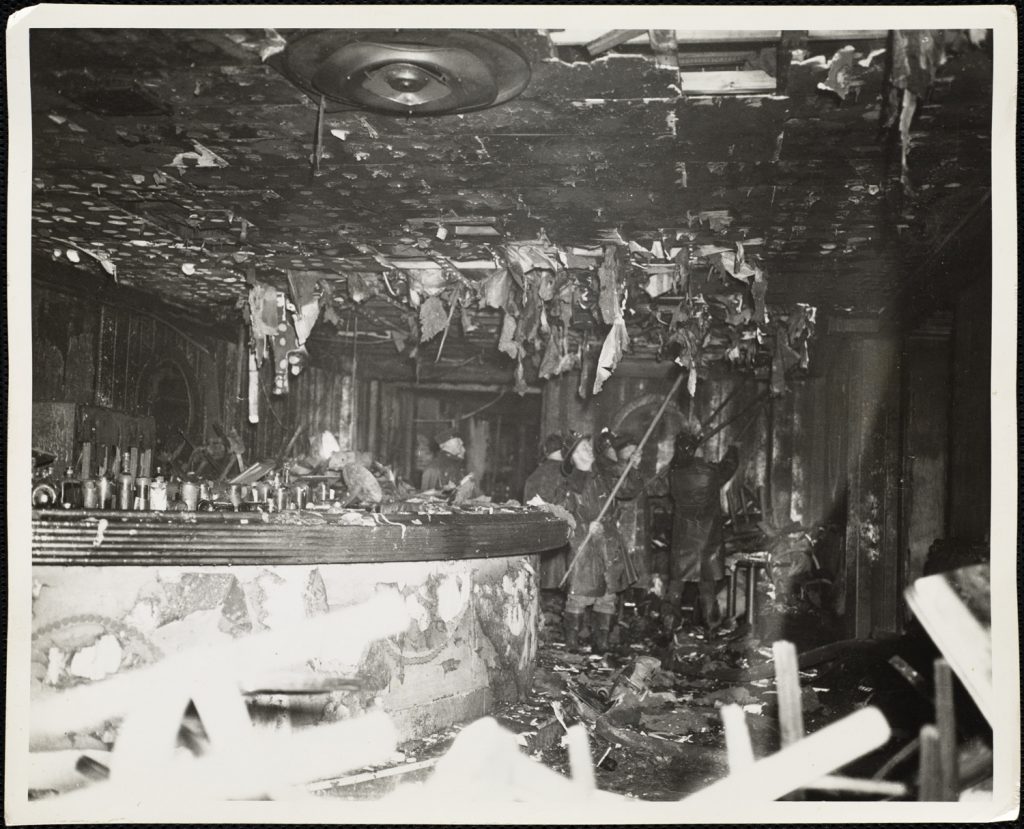
https://www.flickr.com/photos/boston_public_library/6130453343/in/photostream/
When the extent of the fire was realized, a call for help was made with the Navy, Army, Coast Guard, and National Guard assisting in the evacuation and removal of the injured. Vehicles of all kinds were used to transport the injured. Just a week before the fire, a major drill was practiced in area hospitals. A majority of the injured were taken to Boston City Hospital (BCH) with others being treated at Massachusetts General Hospital (MGH). Other hospitals received some victims, but could have handled more.
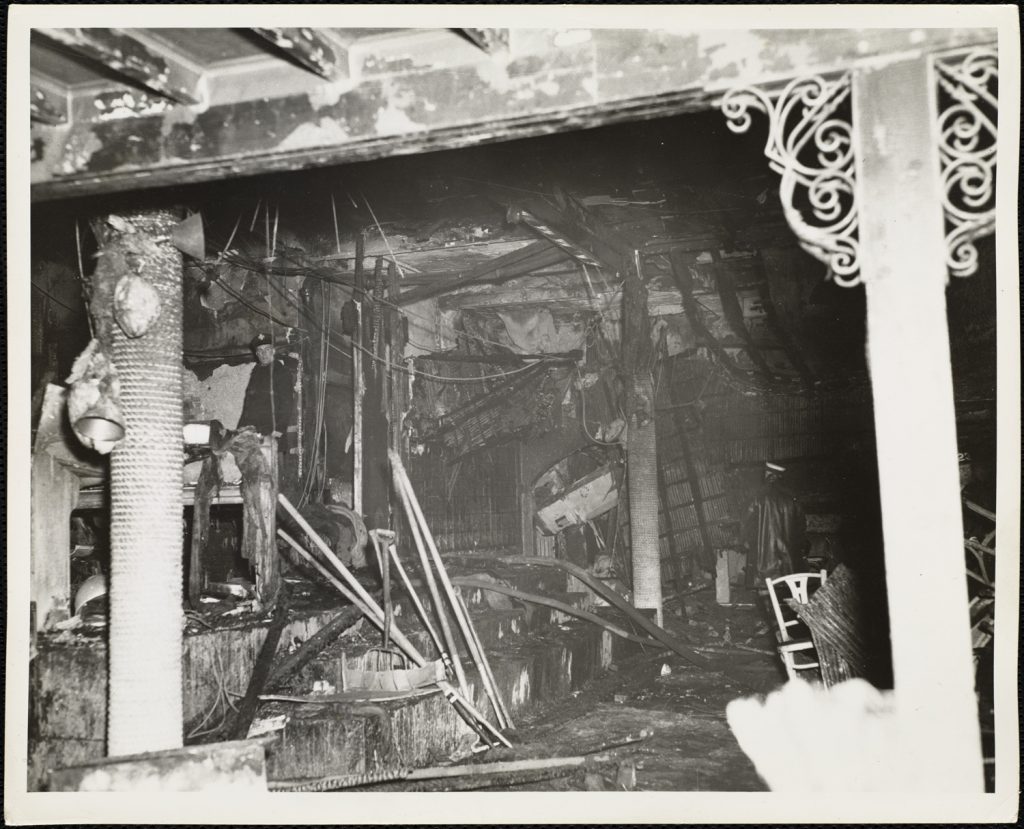
https://www.flickr.com/photos/boston_public_library/6130453503/in/photostream/
Identification of the victims was difficult, especially for the females, as their identification was kept in the purses, which were separated from their owners during the fire. Families had members listed as missing, those who were thought to be dead were sent to the morgue, but were still alive, and in other cases, people were listed incorrectly on the survivor and dead sheets, as well as incorrectly identified as among the lost. This tragedy affected so many families in the greater Boston area and many can remember the stories about the fire being told, family members who were affected, or they knew some of those lost. Even 80 years later, the story of the fire has a lasting memory in this area. This summary is just a scratch of the impact in the greater Boston area. For those interested in learning more about the fire, its victims and the extent of this impact on the community, a suggested reading list is at the end of this post.
So, what does a fire in Boston have to do with Lowell History?
First, a small number of the victims of the fire were from the greater Lowell area, including 2 young women from Centralville and a soldier from Tyngsboro as well as others well known in Lowell.

Carolyn Gilbride, 20, of Swampscott, buried in Lowell at St. Patrick’s Cemetery – had family in the area.
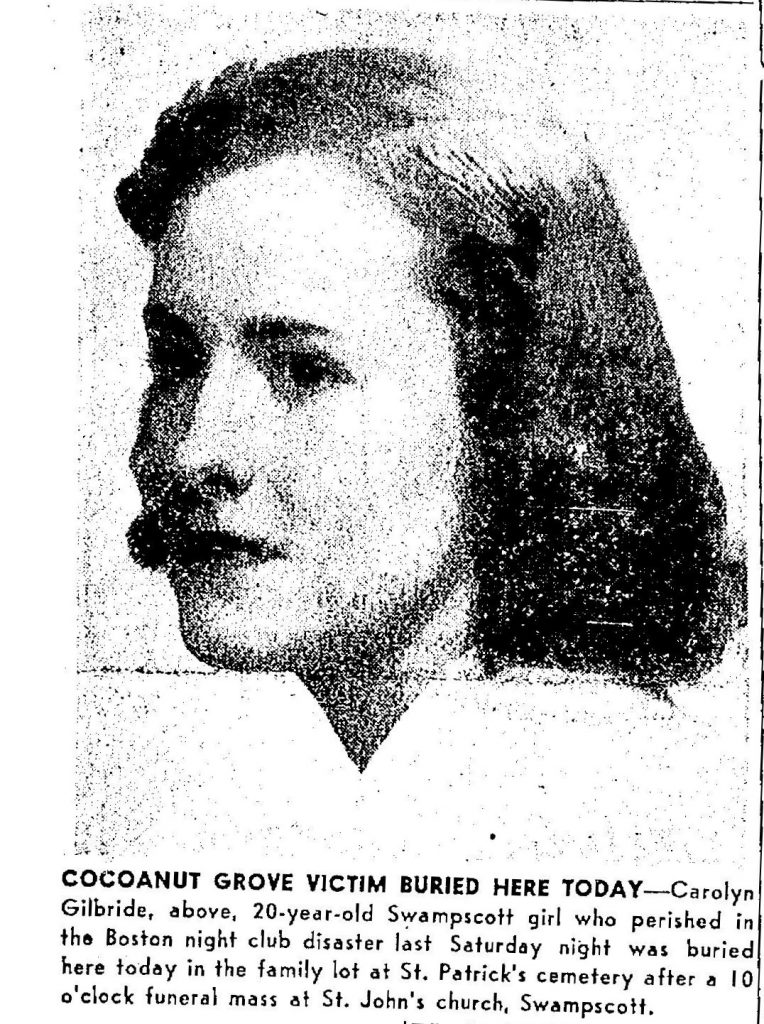
Two Lowell Girls, Mary E. Kelly and Mildred Rogers lost their lives in the Cocoanut Grove fire. The girls were remembered in a double funeral.
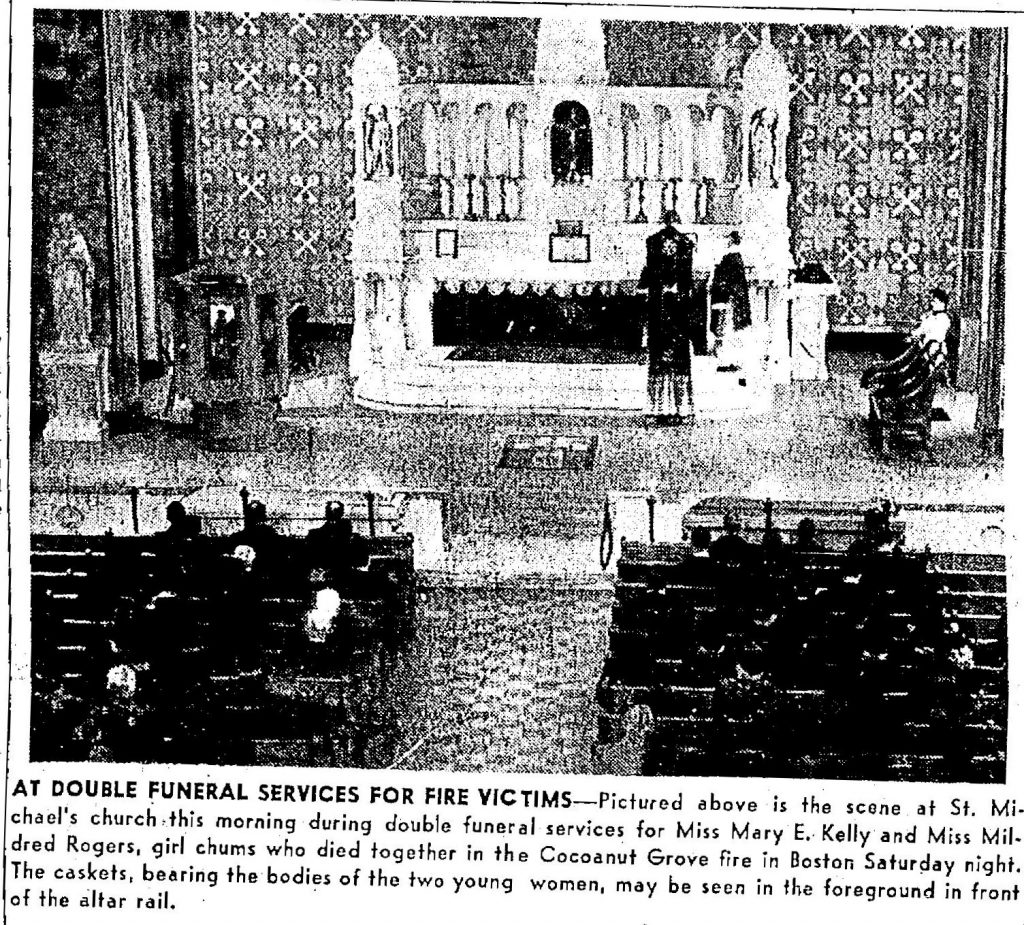
Additional victims had ties to the Lowell State Teachers College, family in the area, and more.
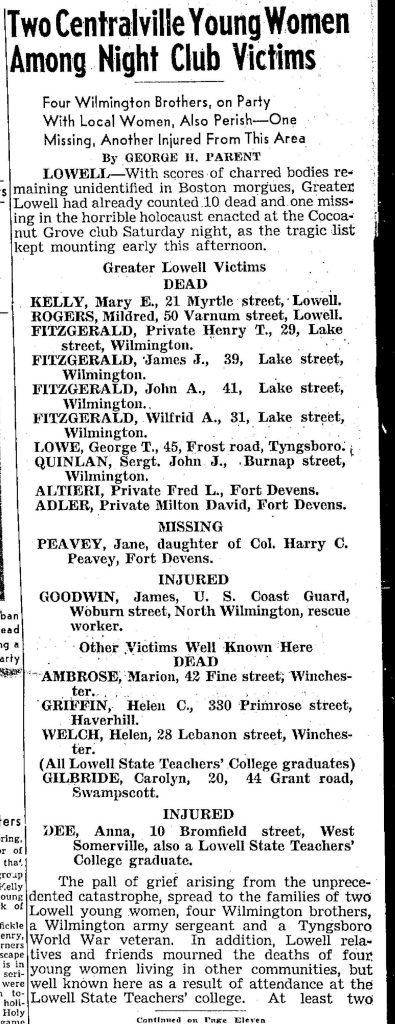
Three Lowell girls narrowly escaped the fire by 5 minutes due to one of them being underage and recounted their experience to the Lowell Sun
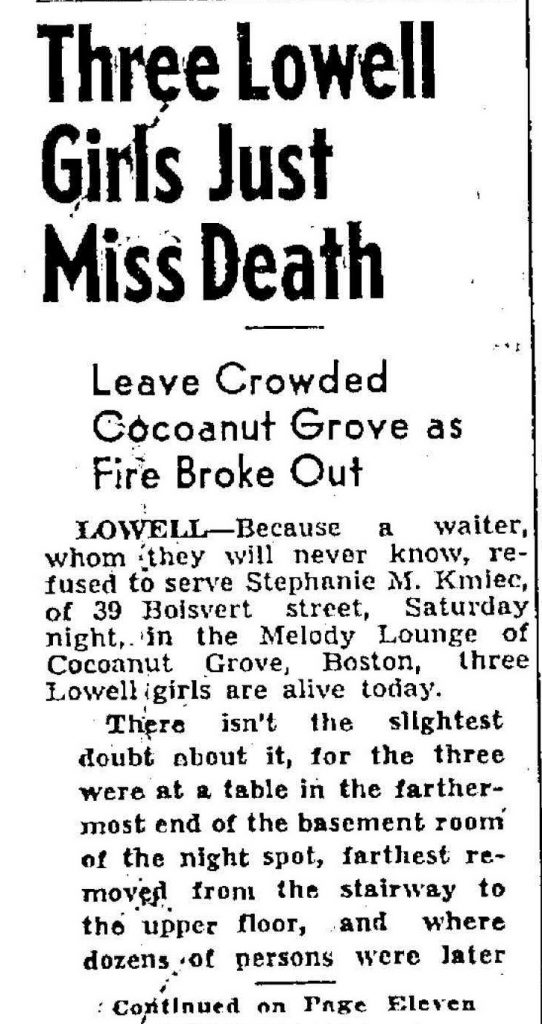
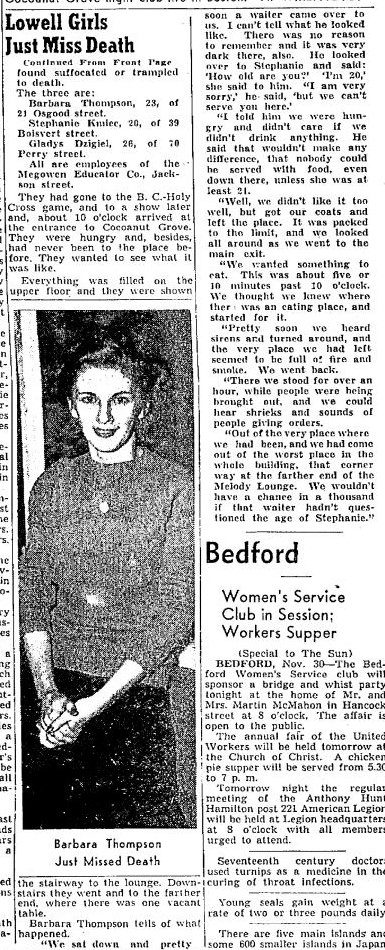
A Lowell Sun editor happened to be an eyewitness to the fire and recounted his experience in the Lowell Sun.
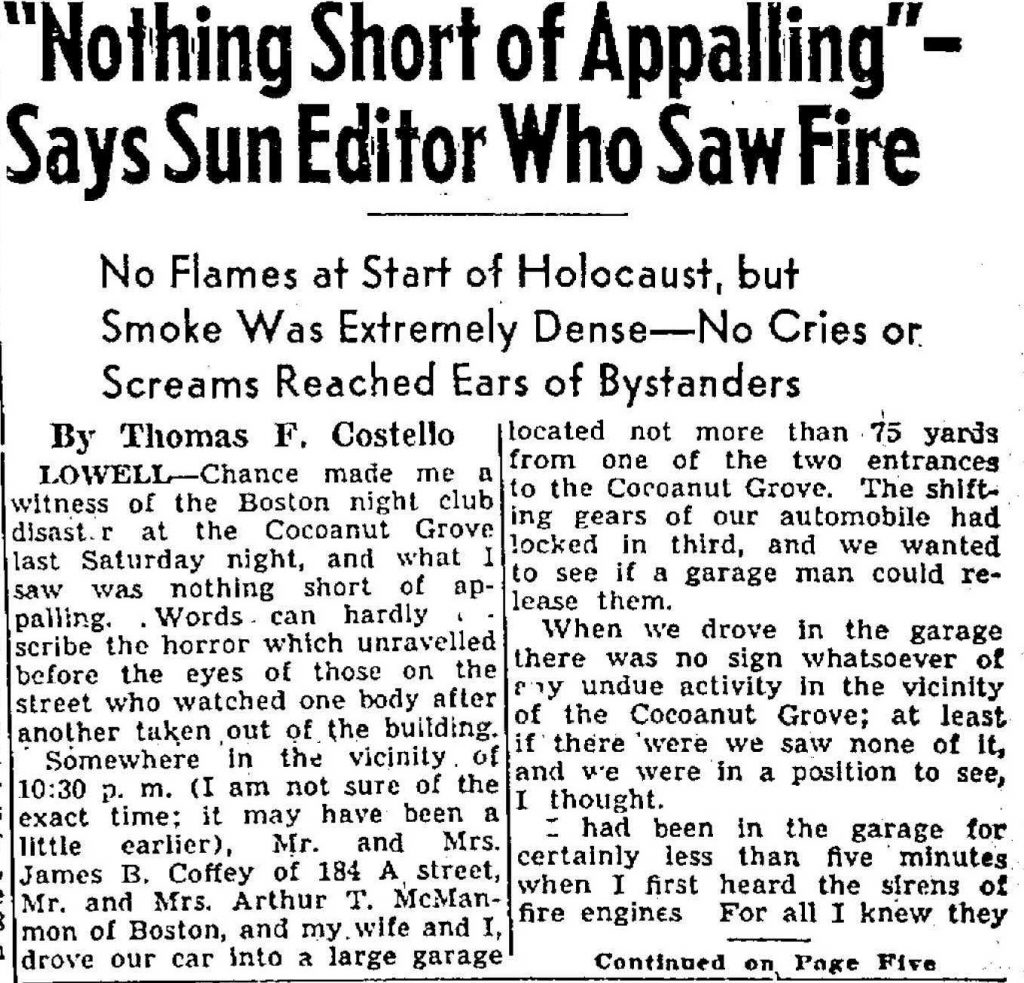
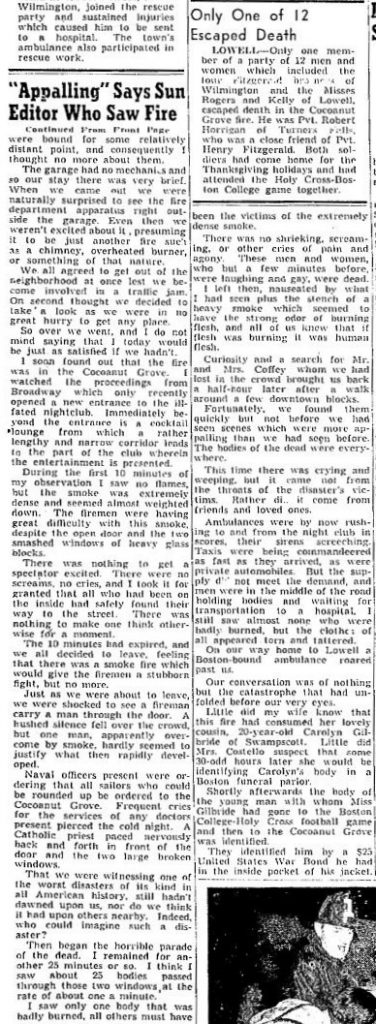
Besides the families that were affected, Lowell businesses were impacted by the lasting scare of the fire. Various establishments were shut down due to egress issues, artificial decorations, revolving doors, and more. This lasted for quite some time after the fire as various establishment codes needed to be revised and evaluated for safety.

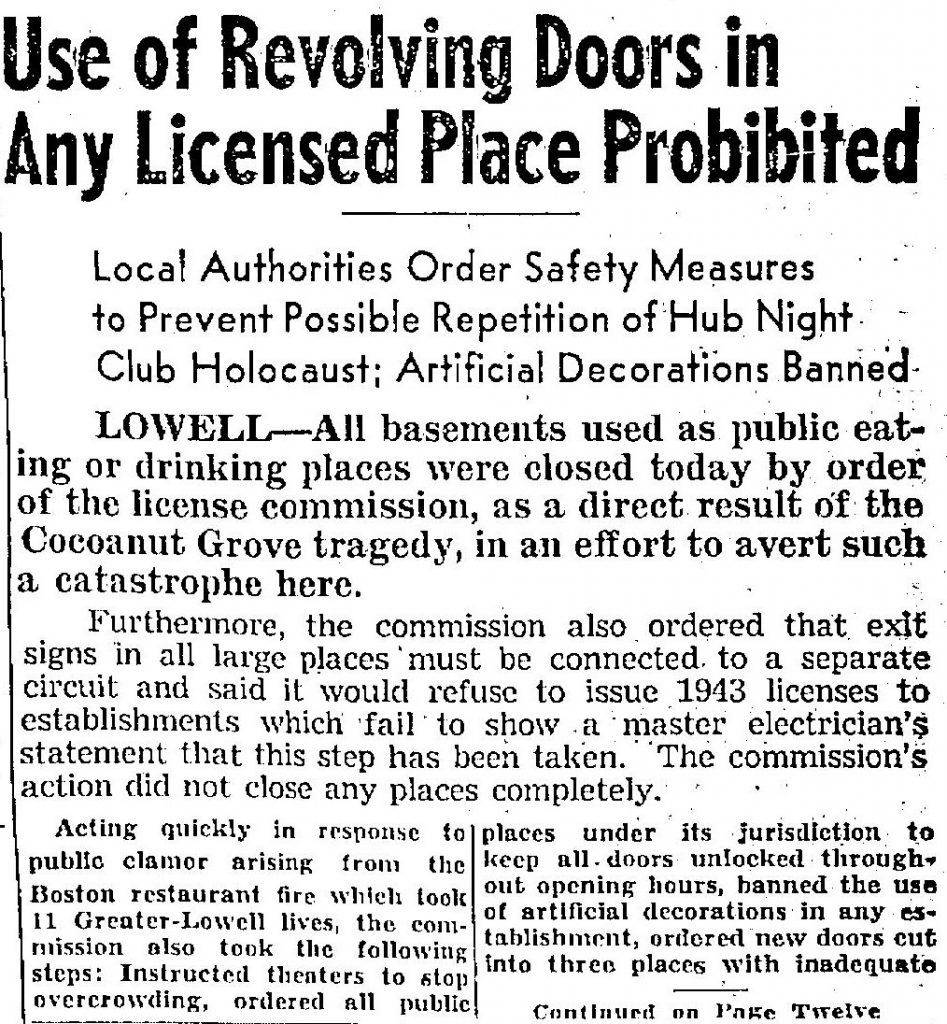

Fire Marshall Stephen C. Garrity
The last tie to Lowell was the State Fire Marshall who was charged with the investigation of the Cocoanut Grove Fire. Stephen Curtis Garrity was born on January 17, 1892 in Lowell to Stephen and Mary Garrity. He attended St. Joseph’s Academy and Ottawa University. He served as part of the 415 Ammunition Train with the American Expeditionary Forces in World War I. He refused to be recognized for his bravery when he shared his gas mask with a wounded friend and suffered damage because of this heroic act. He achieved the rank of Sergeant.
After the war, he was actively involved in the American Legion, serving as the founder of Lowell’s local post and acting as a Commander, Commander of the County Association, State Commander, and National Executive Committeeman.
In 1920, he married Katherine Theresa Sharkey and had 2 daughters. Throughout his career he served as the Head of the Welfare Department and Superintendent of Outdoor Relief, as well as working for the Boston Oil Company. He was elected Middlesex County Sheriff in 1933 and served as the State Fire Marshall for more than 10 total years until the completion of the Cocoanut Grove investigation.
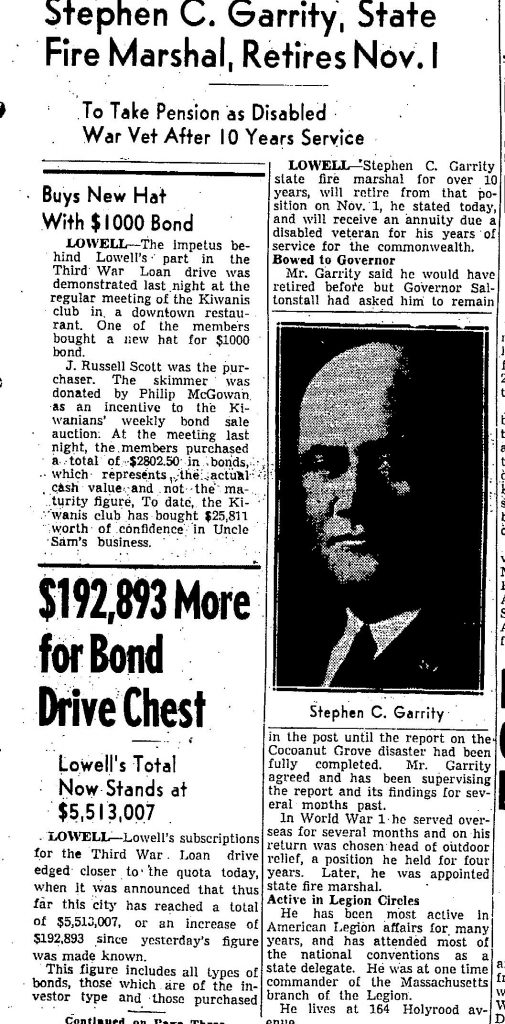
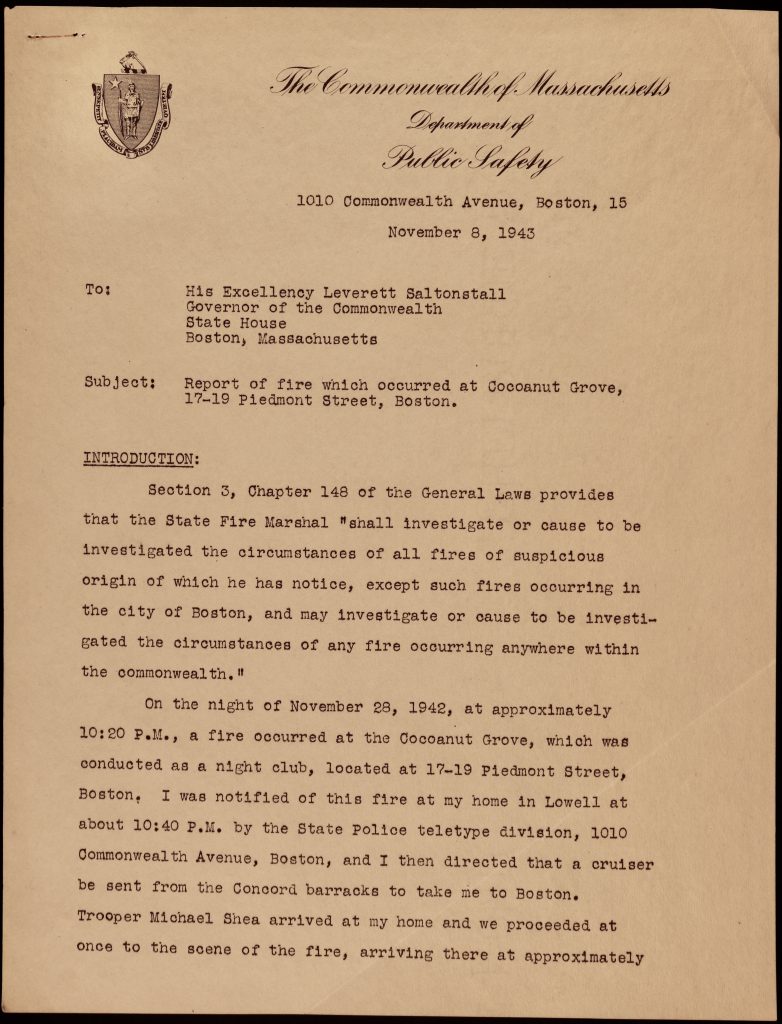
full report can be found scanned at https://libguides.uml.edu/cocoanut_grove_fire
(clickable link below)
He died December 25, 1943 in Lowell at the age of 51. His funeral was held at the Immaculate Conception Church and is buried in St. Patrick’s Cemetery.
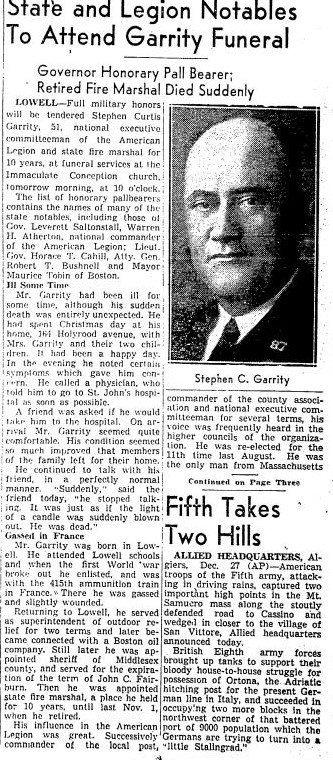
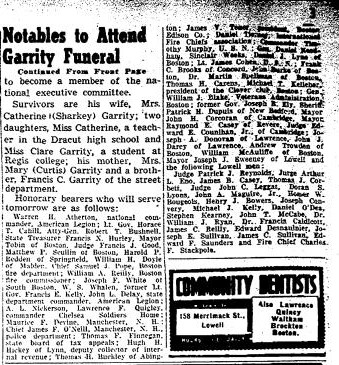
Stephen C. Garrity’s report on the Cocoanut Grove Fire can be seen online at UMass Lowell’s Center for Lowell History Cocoanut Grove Page
Changes inacted due to the Cocoanut Grove Fire that benefit us all today
Many changes occurred that we benefit from today including:
* Improved building code regulations
* Increased public education and awareness regarding safety
* Improved mass casualty planning and emergency preparedness
* Increased focus on burn-related science and treatment
* Reduction in incidence of burn injuries
* Decreased mortality and morbidity from burn injuries
Changes to building code regulations include
* Exit doors that open out
* No circular (revolving) doors with adjacent doors
* Ancillary power for exit signs
* Occupancy requirements
* Non-flammable materials
* Sprinkler systems
* 2 exit options from basement areas
This fire was a great tragedy and many of the changes that we take for granted today regarding egress, access, etc. guarantee our safety in public spaces. The tremendous work on the fire department, various volunteers, doctors, nurses, and additional volunteers related to this tragedy cannot be discounted.
Additional Resources recommended:
Additional scrapbook materials from Stephen C. Garrity’s family about the fire can be found at UMass Lowell’s Center for Lowell History Cocoanut Grove Page
The Cocoanut Grove Memorial Committee Webpage – https://www.cocoanutgrove.org
The Cocoanut Grove Revisited – National Archives – https://www.archives.gov/publications/prologue/2017/fall/cocoanut-grove
The Story of the Cocoanut Grove Fire – Boston Fire Historical Society – https://bostonfirehistory.org/the-story-of-the-cocoanut-grove-fire/
Schorow, S. (2005) The Cocoanut Grove Fire. Beverly, MA: Commonwealth Editions.
Keyes, E. (1984) Cocoanut Grove: A Spellbinding Account of the Most Famous Fire in American History. New York: Atheneum.
Esposito, J. C. (2005) Fire in the Grove: The Cocoanut Grove Tragedy and Its Aftermath. Cambridge, MA: Da Capo Press.
